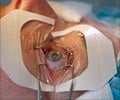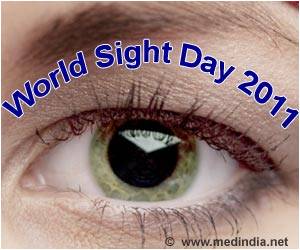
"Younger viewers incurred higher immersion but also greater visual and motion sickness symptoms in 3D viewing," authors, led by Shun-nan Yang, PhD, of Pacific University College of Optometry, Forest Grove, Oregon, said.
"Both [problems] will be reduced if a farther distance and a wider viewing angle are adopted."
The researchers performed experiments in which adults, from young adult to middle-aged, were invited to watch a movie (Cloudy with a Chance of Meatballs) in 2D or 3D while sitting at different angles and distances.
Visual and other symptoms were assessed-including the role of factors including age, seating position, and level of "immersion" in the movie.
Twenty-one percent of participants reported symptoms while watching the movie in 3D, compared to twelve percent with 2D viewing.
Advertisement
3D viewing also led to a greater sense of immersion- "a greater sense of object motion and motion of the viewer in space"-compared to 2D viewing.
Advertisement
Sitting at an angle to the screen was associated with less immersion as well as reduced motion symptoms.
There were some differences by age, including a lower rate of blurred vision in older viewers (age 46 and older).
Older viewers had more visual and motion sickness symptoms in 2D viewing, while younger viewers (age 24 to 34) had more symptoms in 3D viewing.
The same age-related changes leading to lower rates of blurred vision in older viewers may also explain their lower rates of symptoms during 3D vision.
As 3D movies become more common, including on home screens, there are reports of visual and other symptoms among 3D viewers.
Vision and orientation symptoms related to 3D viewing may be related to a "mismatch" between focusing and converging the eyes.
Anthony Adams, OD, PhD, Editor-in-Chief of Optometry and Vision Science notes "the technology for reducing mismatch between where the eyes converge and where they focus is likely to improve rapidly."
The study identifies several factors associated with symptoms during 3D viewing.
"3D viewing is quite specific in causing blurred vision and double vision, and the resultant symptoms are greater for younger adults," Dr Yang and colleagues wrote.
3D produces a greater sense of immersion than 2D viewing, which leads to more symptoms of motion sickness-especially for younger adults and when viewing from a closer distance and a more direct angle.
The study will help optometrists and other eye care professionals in talking to patients about visual and other symptoms related to today's sophisticated 3D video setups.
The study is published in Optometry and Vision Science, official journal of the American Academy of Optometry, by Lippincott Williams and Wilkins, a part of Wolters Kluwer Health.
Source-ANI









